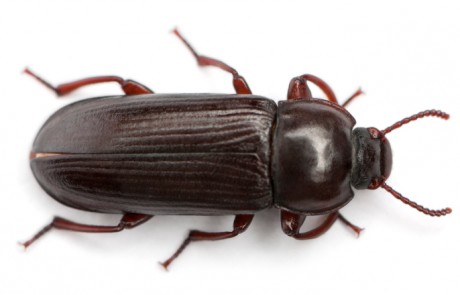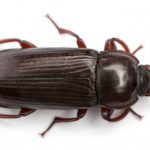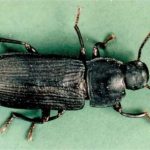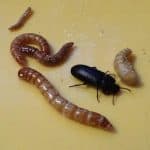Votre panier est actuellement vide !

The miller beetle
The adult is brown-black in color (hence the choice of the term Tenebrio).it reaches 1.5 cm in length on average (1.2 to 1.8 cm).the larva is worm-like, brown-yellow in color: we call this larva the mealwormAt the end of its development, the larva may be longer (up to over 2.5 cm), but not as wide as the adult.it has wings but uses them little or not.
Latin Name: Tenebrio molitor
Description:The adult is brown-black in color (hence the choice of the term Tenebrio)It reaches 1.5 cm in length on average (1.2 to 1.8 cm).The larva is worm-like, brown-yellow in color: this larva is called the mealwormAt the end of its development, the larva may be longer (up to exceed 2.5 cm),but less wide than the adult.Has wings but uses them little or not.
Reproduction:The tenebrion reproduces relatively quickly: the entire developmental cycle takes place in two to three months, if conditions are favorable (25 to 27 °C),but can take a year in the wild.The female lays very small and transparent eggs, difficult to detect in the flour. The number of larval stages, separated by moults, is variable: a minimum of 8, a maximum which can exceed 20. The animal is indeed able to adapt the speed of its discontinuous development to the external conditions. It will have a tendency to grow bigger and to make more larval molts, if it finds food in abundance and if it lives in contact with other larvae (thus giving bigger adults). On the contrary, it will have a tendency to metamorphose less quickly if the food resources are exhausted or if it is isolated (thus giving smaller adults). It is adapted to live in desert conditions. The life of the nymph is 6 to 20 days depending on the temperatureand the adult can live for a few weeks (less than 2 months) during whichthe female performs several egg-laying cycles (a few hundred eggs in total).
Habits:The larva usually tunnels through several substances to hibernate,including wood or cardboard. The larva and adult live in dark, hidden places.They feed on corn, wheat, graham flour and seeds. However, they prefer germ to seed and the adult could also feed on meat.Millstone beetle is often found in mills and farm buildings,hence the infestation of animal feeds by this insect.In homes, it feeds mainly on decaying organic matter.Usually found where there are bird nests and frequently in garbage chutes.
Prevention:The best method is a combination of good cleaning and chemical treatment. Food sources and insect shelters should be eliminated before treatment. Any surface soiled with food or decaying organic matter should be cleaned and then a residual insecticide sprayed into cracks and crevices of infested areas. Treatments should be administered by specialists to ensure that all sources of infestation are treated.


